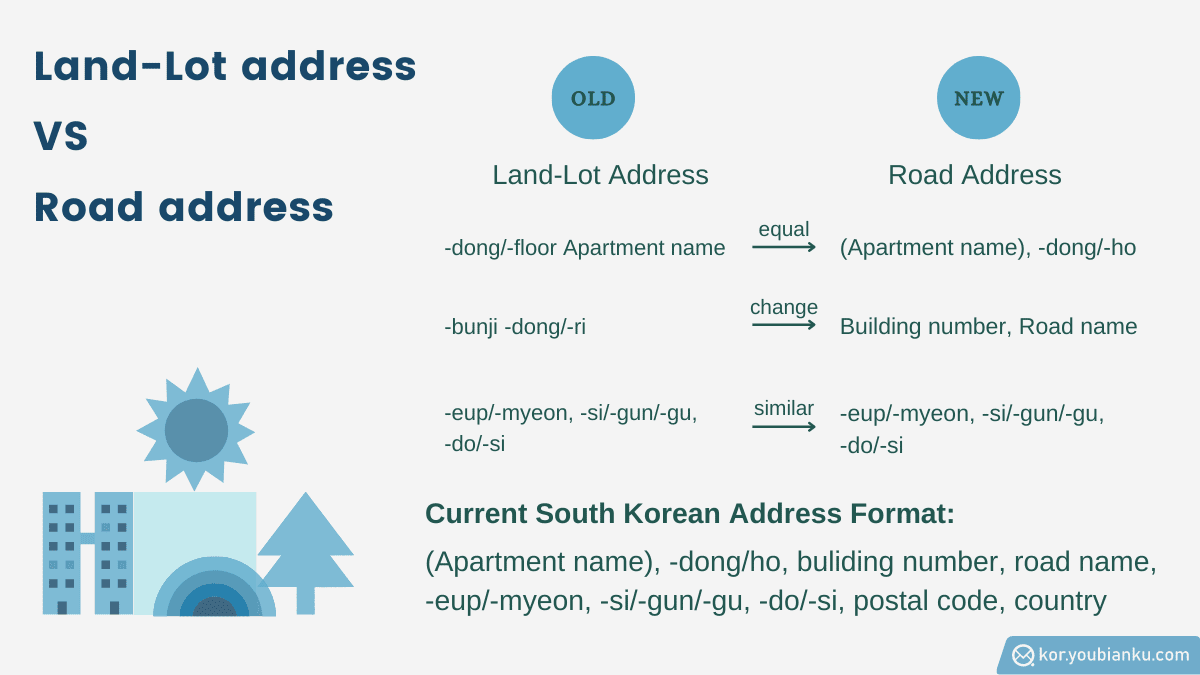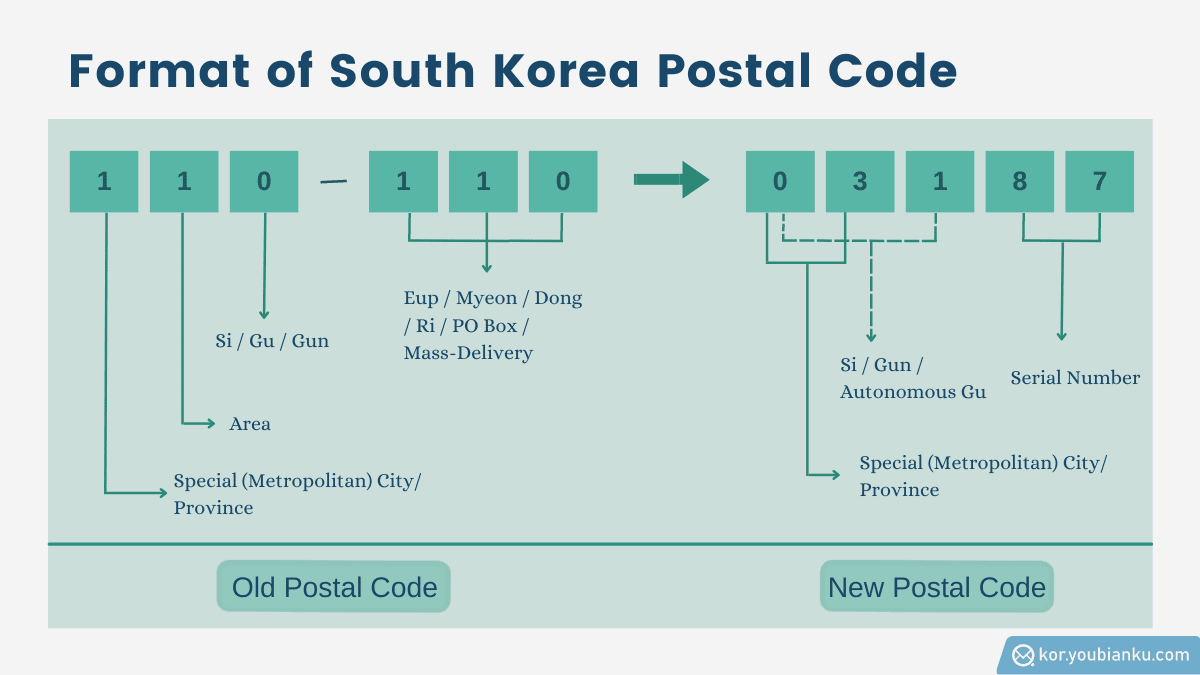The address system in South Korea has witnessed significant reform and modernization in recent years. The introduction of the new road address system in 2011 marked a crucial milestone in improving the accuracy and efficiency of addressing across the country. This article talks about the South Korea road address and postal code system, highlighting the changes brought about by the reform and shedding light on the address formats and road address allocation.

Reforming of South Korea Address System
In 2011, South Korea embarked on a comprehensive address reform aimed at revamping the existing address system and aligning it with global standards. The reform was driven by the need for a more precise, standardized, and user-friendly addressing system to meet the growing demands of a rapidly expanding population.
On July 29, 2011, the new road address system was introduced alongside the old land-lot address system. This transitional period allowed users to familiarize themselves with the new address format while ensuring a smooth transition. The coexistence of both systems aimed to ease the transition process for individuals and businesses. Then, on December 31, 2013, the old land-lot address system was officially closed, and the new address system became the sole addressing method used in South Korea.
Despite the shift to the new address system, one component of the old system, the "-dong" subdivision was replaced by road name, but it was retained as a local administrative division. Many Koreans continue to include the "-dong" name when providing addresses in Korean, as it remains a familiar and recognized element of the address structure.

Reforming of South Korea Postal Code System
In addition to the address reform, South Korea also revamped its postal code system. On August 1, 2015, the postal code system transitioned from a 6-digit format to a more streamlined 5-digit format. This change aimed to enhance the accuracy, operability, and efficiency of postal codes and addresses throughout the country.

Address Formats in South Korea
To ensure efficient delivery, it is advisable to provide addresses in Korean when sending mail to South Korea. However, recognizing that Korean is not universally understood, the Korean authorities have provided a Romanized English address format for non-Korean speakers.
The current standard address format in South Korea includes the following elements:
- Building Number: Every building along a road is assigned a unique number. Odd-numbered buildings are typically located on the left side of the road, while even-numbered buildings are situated on the right side. These building numbers increment in the direction of the road.
- Road Name: Each road in South Korea is allocated a specific name. Roads play a central role in the new address system, serving as the primary reference point for locating addresses.
- District (Optional): In some cases, a district name may be included in the address. Districts often serve as administrative subdivisions within larger regions, helping to further narrow down the address location.
- City/Province: The city or province where the address is located is an essential component of the address format. It provides a broad geographical context for the address.
- Postal Code: The 5-digit postal code is a vital element of the address, facilitating accurate and efficient mail sorting and delivery. Each address in South Korea is assigned a unique postal code.
When providing an address in Romanized English, it is crucial to add the name of the country at the end to ensure clarity and avoid any potential confusion during international mail delivery.

Conclusion
The address reform in South Korea, implemented in 2011, has revolutionized the way addresses are structured and managed in the country. The introduction of the road address system, alongside the transition to a streamlined postal code format, has significantly improved the accuracy, efficiency, and user-friendliness of the addressing system.